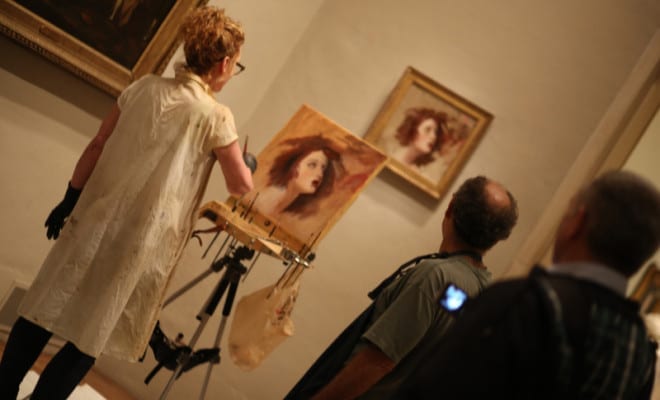
Copying a Painting at The Philadelphia Museum of Art III
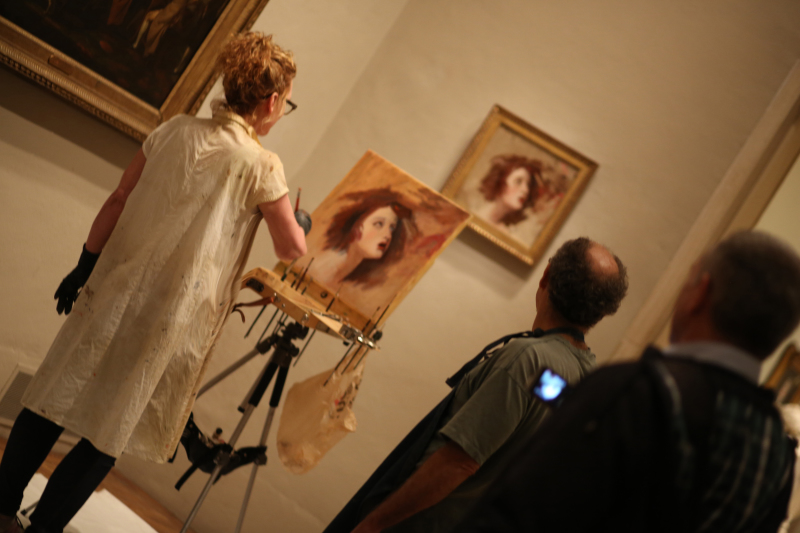
Me, Hal and a stranger video tapping me painting. Lots of people asked if they could take my photo while I was painting.
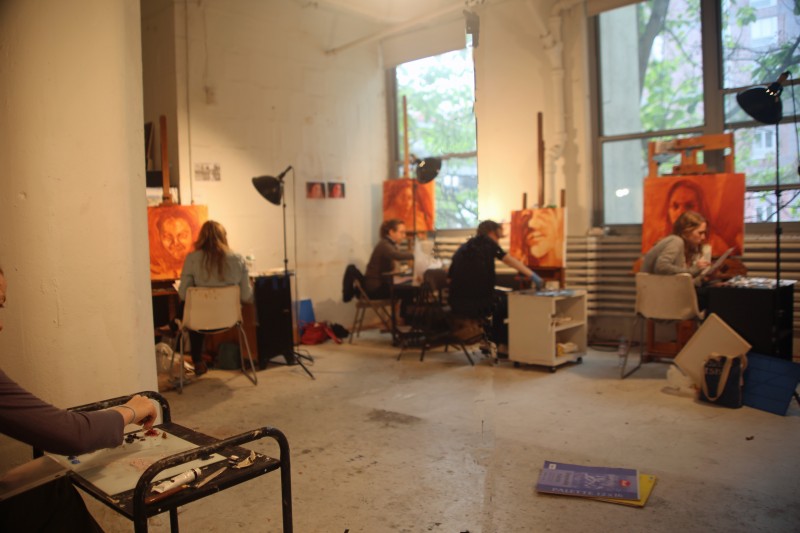
Alysa Monks workshop
Taking Breaks:
My workshop with Alyssa Monk seemed to address my poor time management. She not only made us all take breaks, she had us do a kind of spiritual exercise. We had to sit with our backs to our paintings and then turn our chairs around and look without judgement. She said, “Really look. Let the information come in, but don’t condemn or think any judgmental thoughts, just observe and let it happen.” It felt like we were in a yoga class. Unfortunately, although it was really helpful, I need to make it more of a habit. Maybe putting this out there will help me to remember.
One of the very best experiences that happens while you paint in a museum are the docent tours. I learned fabulous things about my painting I never knew before. Did you know Miranda (the woman in my painting) actually started out as a housekeeper in the 1700’s. She ended up not only being George Romney’s muse and model for over 80 paintings, but also was a trend-setter in fashion? She married a duke and then fell in love again with a navy admiral, who ended up living with her and the duke. It’s true she gave many parties and even danced nude on the tables in some of them. This was clearly a woman who had too much passion for life to have been exploited.

Joe Minaj one of the monitors in my Max Ginsburg Sunday class.
Joe Minaj from my NYC Max Ginsburg class told me this was George Romney’s great grandfather. He also told me in ateliers when students are assigned to copy a painting at a museum, they are also required to find out everything they could about the artist and the painting. What a great idea! So that’s what I did. Romney painted portraits, landscapes, as well as literary, mythological and historical subjects. Of his more than 80 portraits of Emma Hart, several are of her in historical, mythological, or (as here) literary roles. Romney, like his younger contemporary William Blake, who he championed, was a kind of anti-establishment, anti-Academy artist. (Both, for instance, shared a strong dislike for the Academician artist of the time, Joshua Reynolds.) Like Blake, Romney was a progressive, left wing thinker–a little different from the Romney we know today! He lived in the age of the French Revolution and, as his free-spirited muse bears witness, was sympathetic to that cause.
In addition to historical background it’s of course necessary to determine the artist’s technique. I learned, for instance, that Romney used very concise strokes, (a technique possibly acquired from studying the Italian masters, especially Raphael which, unfortunately, I was unable to do. In fact, I finally had to fall back on just trying to interpret what I saw. Maybe this is why artist that copy at museums copy paintings more than once.
Get great posts like these in your inbox!
Enter your email and we'll send you new posts when they are published. It's that simple!
We promise to never sell or distribute your email addresses. Your privacy is safe with us.




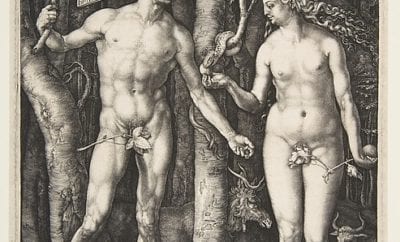
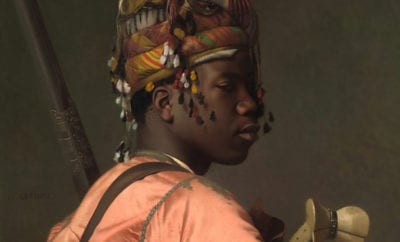
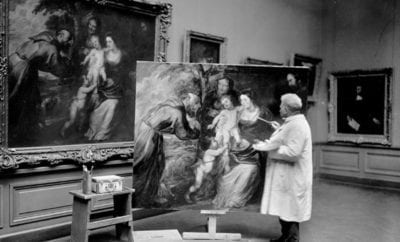

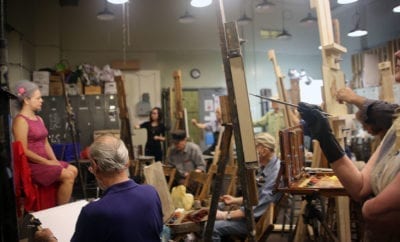
3 Comments